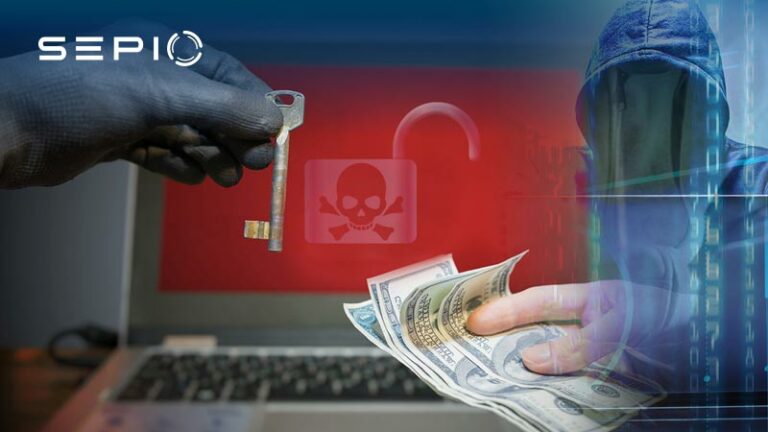What Are Ransomware Payments?
Ransomware payments involve paying a sum of money, often in cryptocurrency, to individuals or groups responsible for a cyberattack. Hackers frequently target organizations with ransomware, encrypting their data and demanding payment. Ransomware is malicious software that uses encryption to lock a victim’s files or systems, rendering them compromised. The attackers then demand payment, usually in Bitcoin or other cryptocurrencies, in exchange for providing the victim with the decryption key. This type of attack has been linked to numerous data breaches and malware infections that cause significant damage to businesses and individuals.
Bitcoin and Ransomware Attacks
Bitcoin has undoubtedly facilitated ransomware payments in cybercrime, specifically ransomware attacks. The rise of ransomware attacks and Bitcoin demanded as the ransom payment method, emphasizes the need for a stronger cybersecurity posture. The cryptocurrency is favored by cybercriminals for a number of reasons. Primarily, it is easily accessible to the victim which makes the transfer of the ransom a smooth process. Furthermore, the payment can instantly be verified by the public blockchain. Additionally, Bitcoin provides the hacker with anonymity since the ransom payment can easily be laundered. A criminal’s dream. Because of these benefits, 98% of ransomware attacks demand Bitcoin as the payment method.

However, with this figure so high, and the fact that a ransomware attack occurs every 14 seconds on average, it is reasonable to posit the idea that the relationship between Bitcoin and ransomware is reciprocal. In other words, while Bitcoin assists in ransomware attacks, it is such attacks that contribute to Bitcoin’s increasing value (ransomware facts).
Ransomware Payments and Bitcoin’s Value
Cryptocurrency in general has seen a massive surge in the last few months. The value of all crypto’s increasing from $140 billion in March 2020 to $1 trillion in January 2021. However, Bitcoin is the largest and therefore has the greatest impact on the overall value of cryptocurrency. The value of Bitcoin is at an all-time high of just over $30,000 (as of January 2021). In January 2020, Bitcoin was valued at around $7,000, meaning that there has been a year-on-year increase of more than 300%. The second largest cryptocurrency, Ethereum, has seen a much larger year-on-year increase at more than 600%. Nevertheless, it is only valued at around $1,000.

The Recent Rise in Ransomware Attacks
The number of ransomware attacks between mid-2019 to mid-2020 also increased at an alarming rate: by more than 700%, according to cybersecurity researchers. Cyber-criminals are constantly seeking nefarious ways to conduct ransomware attacks, and hardware-based attack tools are becoming increasingly popular. By using the hardware attack interface, Rogue Devices go undetected, thereby increasing the chances of success for the perpetrator. By implanting a Spoofed Peripheral or Network Implant within the target, malicious actors can initiate a ransomware attack without raising alarms.
Phishing schemes have also been instrumental in the spread of ransomware. Social-engineering tactics trick unsuspecting users into downloading malicious attachments or revealing passwords. Once inside a network, attackers can exploit vulnerabilities to gain unauthorized access to sensitive data and critical systems.
The rising figures of both the number of ransomware attacks and Bitcoin’s value point to a correlation between the two. But, by using the basic economic law of supply and demand, we can see that there might actually be a causational relationship. When demand goes up, but supply remains the same, the equilibrium price increases. Security experts warn that as long as Bitcoin remains the currency of choice for ransoms, this cycle will continue.
Ransomware Trends
Although being advised not to, 45% of victims do pay the ransomware. The decision to pay the money is often because of the sensitivity of the encrypted files. Many targets are of high value, such as healthcare entities or government agencies (who were targeted 700 and 948 times, respectively, in 2019) and therefore cannot afford to risk alternative options. Since almost all ransomware attacks demand payments in Bitcoin, the paying victim has to acquire Bitcoins, thus increasing demand. Because of the frequency of ransomware attacks, the rise in demand of Bitcoin is enough to impact the cryptocurrency’s value. It is important to note, however, that ransom payments actually make up a small proportion of Bitcoin’s daily trading volume. Nevertheless, even small increases in demand can affect the overall price of Bitcoin, both directly and indirectly.
Now that we understand the basics, let’s see how ransomware trends have increased the demand for Bitcoin.

Ransom Payments on the Rise?
Primarily, ransom payments have increased over the years which contributes to growing demand. The average payment rising from $4,300 in 2018 to $8,100 in 2020. Large organizations with higher cybersecurity defenses are often targets for high-profile ransom demands, such as the $600,000 payment made by the City of Riviera Beach in 2019.
However, small and medium-sized businesses (SMBs) are often targets for a ransomware attack due to their limited cybersecurity capabilities, with 60% of SMBs being hit in 2020. In this specific sector, an unsettling 73% opt to pay the ransom – which is often in the region of five-figures. Criminals exploit weak computer-security measures to infiltrate these organizations. The total amount of ransom payments per year is around $1 billion. This significant figure indicates a high demand for Bitcoin, thus impacting its value.
The Escalation of Ransomware Attacks
These astonishing statistics also act as an incentive for other cybercriminals. Ransomware attacks evidently have great success, and this increases their appeal. A growing number of bad actors are turning to ransomware attacks, and there has been an influx of ransomware-as-a-service being sold on the dark web which allows a greater number of bad actors to carry out these malicious attacks. Hence, as mentioned, ransomware attacks have increased by 700% in just one year. This figure correlates to the rising frequency of such attacks. One attack occurs every 14 seconds in 2019, up from every 40 seconds in 2018.
As more organizations are targeted, more ransomware payments are made, pushing up demand for Bitcoin and further incentivizing attackers.
The Demand for Bitcoin
As ransomware attacks become more frequent and sophisticated, companies are stockpiling Bitcoin to handle potential ransom demands. On average, organizations lose $8,500 per hour due to downtime caused by a ransomwhere breach, making the ability to quickly pay the ransom critical. More than 70% of CISOs report maintaining a Bitcoin stockpile to quickly respond to ransomware incidents.
Preventing Ransomware and Avoiding Payments
Sepio’s Asset Risk Management (ARM) solution provides enterprises with the physical layer coverage they need to obtain complete network device visibility. In doing so, also protects against hardware-based attacks. As the leader in Rogue Device Mitigation, Sepio’s solution identifies, detects and handles all peripherals. No device goes unmanaged. Through machine learning and fingerprinting technology, Sepio’s ARM solution calculates a unique digital fingerprint for every device, detecting vulnerabilities and compromised devices.
See every known and shadow asset. Prioritize and mitigate risks.
Talk to an expert. It will help you understand how to use Sepio’s patented technology to gain control of your asset risks and defend against cyber-attacks.






